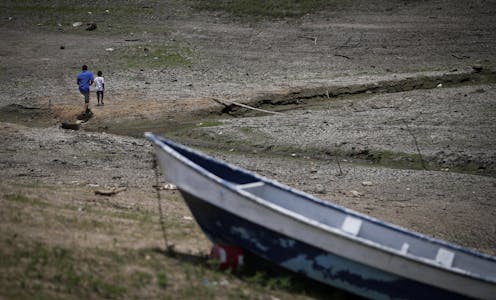How drought in Central America is pushing up the cost of living in Australia
- Written by Stephen Bartos, Professor of Economics, University of Canberra

What does a drought in Central America have to do with Australia’s cost of living? Quite a lot, if the drought affects the Panama Canal.
The 425 square kilometre Gatun Lake was built in the early 1900s to store water for the Panama Canal. Water is needed to float ships so they can navigate the canal. Now drought has severely affected the lake’s water levels.
Because of this the Panama Canal Authority has had to cut the number of ships using it. Hundreds of ships have queued up to wait their turn.
In June, Newsweek magazine[1] drew attention to a Canal Authority graph showing the water levels in the lake dropping to unprecedented lows.







